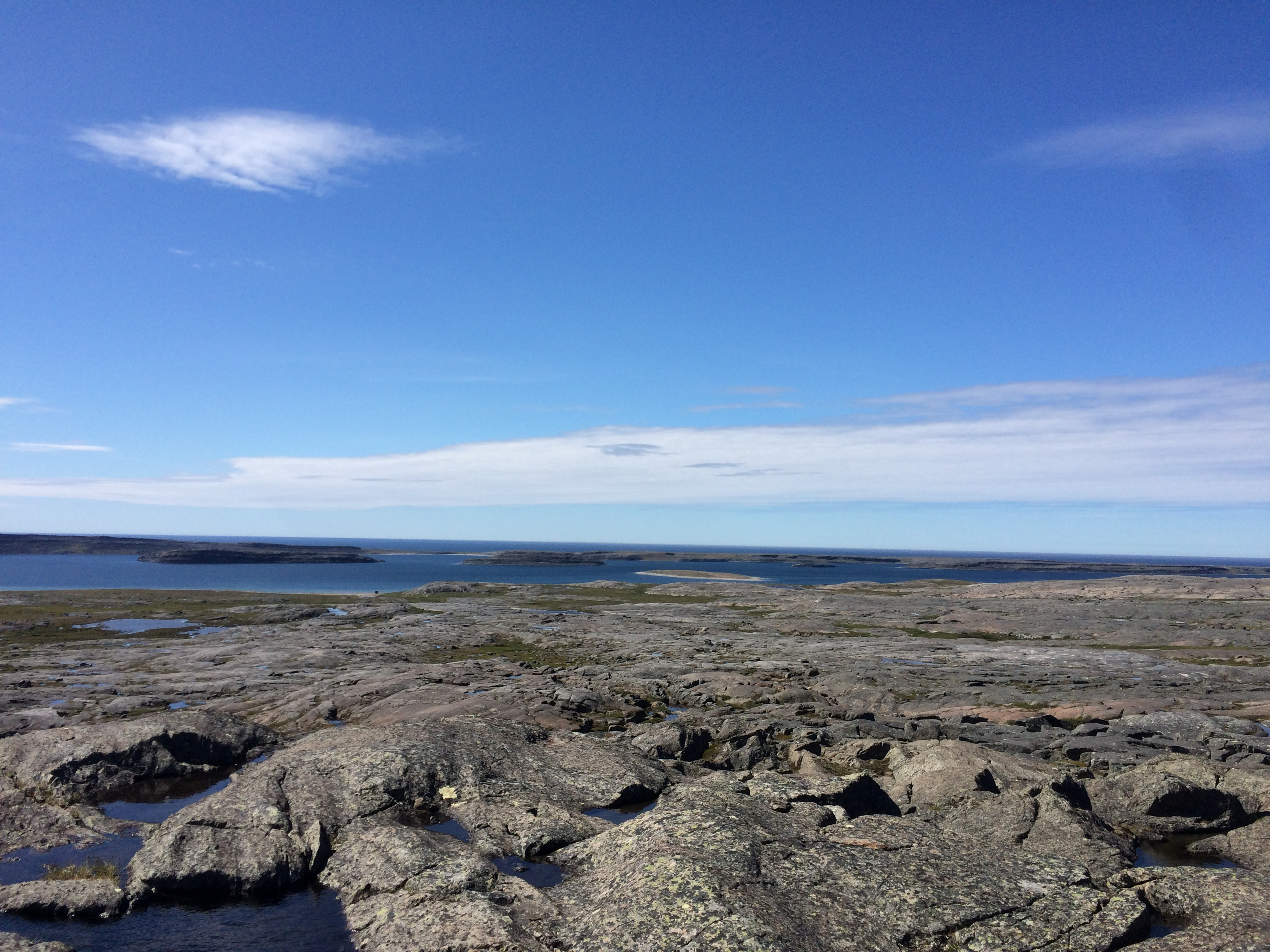A more detailed investigation of the Nuvvuagittuq Greenstone Belt has strengthened Canada’s claim to host rocks that date back to the Hadean Eon. This would make them strong favorites to be the oldest rocks on Earth.
Tectonic processes, volcanic activity, and surface erosion constantly recycle the Earth’s crust, so that little, if anything, of the first crust to form out of the primordial magma ocean survives. Moreover, there are great challenges in precisely dating truly ancient rocks, so it’s hard to determine the oldest survivors.
Nevertheless, the Nuvvuagittuq Greenstone Belt, which sits on the eastern shore of Hudson Bay, is accepted as one of the contenders. Even the youngest estimate for the belt’s age is around 3.77 billion years. The oldest is 4.3 billion years, a figure that is hard to beat on a planet thought to be less than 4.6 billion years old, and that was initially too hot for rocks to form.

The view from the belt out onto the bay.
Image credit: Jonathan O’Neil
Every nation likes to host a record (and the tourist dollars that may flow), but the true age of the Nuvvuagittuq Belt is more than just a matter of national pride. The boundary between the Hadean and Archean Eons is officially defined as 4.03 billion years ago – a division made using another Canadian basement rock, the Acasta Gneiss Complex. The Hadean Eon is thought to have been very different from every subsequent geologic era, and scientists would dearly love a surviving record. Many are keen to know if the Nuvvuagittuq Belt fits the bill, particularly given the shortage of alternatives.
Scientists from the University of Ottawa, Carleton University, and the French National Research Institute for Sustainable Development set out to answer the question.
Older estimates for the belt’s age rely on its ratio of neodymium-142 to neodymium-144. Although the same element, these isotopes have different histories, with Nd-142 being the result of the alpha decay of samarium-146. Sm-146 has a half-life of about a hundred million years, so by 4 billion years ago, almost all of it was gone from the Earth. Rocks younger than 4 billion years typically have constant ratios of the two neodymium isotopes, but older ones vary, depending on the amount of samarium present.
However, this conclusion has been challenged based on an alternative model in which the rocks were enriched with material that had been isolated from the rest of the mantle.

Banded iron from the Nuvvuagittuq Greenstone Belt, now in Redpath Museum, Montreal.
The authors performed isotope measurements on intrusions into the Nuvvuagittuq Greenstone Belt and found them to be around 4.16 billion years old. Since these intrusions must be younger than the original rocks, this supports a Hadean origin. Although the authors admit alternative explanations are possible, they say these require an unlikely combination of circumstances. In particular, two distinct pockets of mantle material must have remained unmixed with the rest, only to independently interact with the rocks that became part of the Belt at the same time.
We do have crystals that date back to the Hadean, most notably those from Western Australia’s Jack Hills. However, these are tiny zircons that eroded out of their original rocks long ago, and have often been recycled into younger rocks since, which have sometimes eroded again.
Sadly for the American town that claims to have “the world’s oldest rock”, that status almost certainly lies a long way north.
The study is published in Science.
Source Link: New Claim For World's Oldest Rocks Dates Back A Whopping 4.16 Billion Years